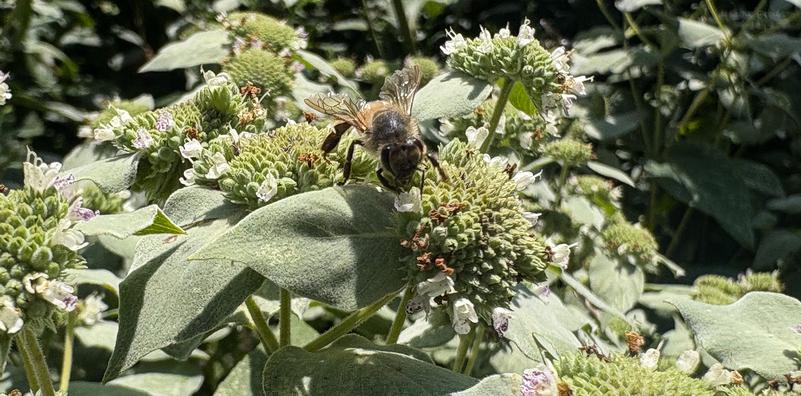Horticulture for Honeybees
We love our novelty holidays here at Pleasant Run, especially ones celebrating the wonders of the natural world around us. August 16th, World Honeybee Day, is definitely one of the most deserving of novelty holidays, honoring our scruffy garden companions on each corner of the globe. This is not to be confused with World Bee Day on May 20th, which is dedicated to bee species of all shapes, sizes, and fluffiness. Honeybees belong specifically to Apis, the largest genus in the bee family, and are originally native to areas of Europe, Africa, and Asia, although their introduction as pollinating pets from country to country has helped them to proliferate on nearly every continent.
Despite their movement worldwide, human intervention and overdevelopment have significantly decreased honeybee populations, which have been impacted by factors such as pesticide use, habitat destruction, and introduced pathogens, resulting in a phenomenon of mass-scale bee deaths called Colony Collapse Disorder. While the EPA reports that instances of CCD have declined over the last five years, the threat remains at an all-time high due to the lack of available resources and the constant transport of pests and diseases brought in with international goods. One of the easiest ways to assist your local honeybee populations is to include plenty of beneficial food sources and eliminate the use of neonicotinoid pesticides.
Of course, it should be noted that not every source of pollen and nectar provides adequate nutrition. Honeybees, much like humans, require necessary quantities of proteins and carbohydrates for the colony to function properly. Incorporating a biodiverse selection of plants into our gardens and landscapes, limiting the use of monocultures, and utilizing only non-genetically modified selections are surefire methods of supporting your local honeybees. The female worker honeybees are responsible for foraging, gathering nectar and pollen for the hive, which are converted into honey and bee bread, a larval food source. It’s been found that some worker bees may be specialized to gather one or the other, and that some worker bees collect both pollen and nectar.
Honeybees tend to show favoritism towards certain flowering plants, visiting the same flower over and over to dutifully collect its bounty. Colony-wide, each bee visits a different flower, likely from a different plant, producing a nutritious medley of minerals, micronutrients, amino acids, vitamins, and metabolites. As it turns out, honey bees prefer plant nectar with a sugar concentration average between 30-50%, the optimal range closer to 60%, and their selections varying depending on the water content availability within their environmental nectar sources. Overly developed urban areas lacking green infrastructure critically reduce the resources available to honeybees and increase the risk of population decline if floral sources are scarce, monocultured, or unavailable altogether.
It’s been found that a colony that has access to multiple floral sources has a higher immunity to pathogens and an overall longer life span for worker bees. In their hunt for adequate resources, honey bees tend towards plant families with ornamentally significant members, including Fabaceae (the pea family), Asteraceae (the aster family), Apiaceae (the carrot family), Plantaginaceae (the veronica family), Fagaceae (the beech, chestnut, and oak family), Salicaceae (the willow family), Rosaceae (the rose family), Sapindaceae (the maple family), and Anacardiaceae (the sumac and cashew family).
Below is a helpful chart of plants that have been designated as beneficial forage for honeybees, although it is non-exhaustive and specific to the Mid-Atlantic, Northeast, Midwest, and Great Lakes regions, as well as the upper Southeast.

Pycnanthemum muticum

